Growing kochia outdoors
Cochia is an unusual ornamental plant with original leaves. Cultivation of kochia is a very interesting process, and care for it is minimal. Depending on your imagination, you can easily give this plant a different shape. His homeland is China, but today the culture is widespread everywhere: in Japan, in America, in Australia.
Its name is associated with the name of the professor of botany Koch. In its appearance, the plant is very similar to cypress due to the presence of small narrow leaves. Excellent brooms are made of it. Cochia is a dense annual crop that grows very quickly and reaches a height of 1 meter. It has small flowers.
From a distance it can be confused with a representative of a coniferous species, but if you look closer and touch the leaves, you can make sure that they have nothing in common. One of the important features of the kochia is the appearance of its foliage, which turns into a bright red hue when autumn comes, which makes it look very impressive.
Growing it is quite an exciting experience, and caring for it is not a problem. But she is not able to withstand frost and low temperatures. In such conditions, the kochiya is doomed to perish. Its essential advantage is its ability to withstand drought.
Kinds
Cochia has more than 80 species. A very popular variety is Kokhia Venichnaya, which is divided into 2 varieties: Cochia Childs and Cochia Volosolistnaya. Their difference is that Volosolistnaya changes the color of the leaves to red with the onset of autumn, while the leaves of Childs' cochia remain green throughout the season.
Here are some more types of cochia.
- Creeping - a squat variety of shrub.
- Woolly-flowered - an annual 80 centimeters high with red or yellow-green stems covered with small hairs.
- Dense-flowered - strongly branching annual 130 centimeters high. Its flowers are covered with white hairs.
Reproduction
Quite often, reproduction is carried out seeds... Sowing in the ground is carried out from late spring to mid-July. It can be sown in a greenhouse for seedlings already in April. Cochia reproduces well by self-seeding.
Good light is important for the seeds to sprout. When sowing, they do not need to be pressed deep into the soil, just sprinkle them with earth. Before sprouting, the ground is covered with a white cloth for about a week. It can be left on until a stable spring temperature has been established. Sprout care should be regular. They need to be periodically thinned out and leave a distance between them no more than 20 centimeters. As soon as the seedlings grow up to 15 centimeters, they are planted in a permanent place. The sprouts will endure a short cold, but in the open field the seedlings will take root when there is no threat of frost.
Podzimny landing is possible. To do this, the bushes are placed in a greenhouse or greenhouse and wait for the ripe seeds to begin to crumble. It is they who will give spring shoots next year. You can harvest these seeds to sow in cold soil when the temperature is constant. Planting is carried out during the onset of frost. Furrows are made and seeds are poured into them, and a little sprinkled with soil on top.
Advice
When buying seeds, even from a trusted manufacturer, you should pay attention to the expiration date.
Landing conditions
Kochia is a freedom-loving culture, which is why plants need to be planted at a distance of 30 centimeters from each other. If you plant them too often, instead of a thick bush, a frail broom with stunted leaves will grow, which no care will help.
Kohia is unpretentious, but loves sunny areas and fertile soil.Sour swampy soil does not suit her.
Advice
On free steppes and in deserts, the plant chooses sunny open places for its growth. Therefore, it must be borne in mind that its planting should be carried out in areas similar to natural ones. Then in the open field the flower will feel good, as it tolerates only light shading.
Care
During the active growth of cochia, care is needed, which consists in weeding, feeding and loosening. You need to fertilize 10 days after planting, and then a month later. Do not forget to apply nitrogen fertilizers after cutting her bushes. The plant is very fond of liquid fertilizers. Tying the bushes is not required.
Cochia easily tolerates a lack of moisture, it can be watered only during a prolonged drought, since in this case it will bloom early and lose its decorative effect. In swampy areas, rotting can begin.
Caring for the plant also consists of a haircut, which should be done every 2 weeks. You can form bushes within your own imagination. The spherical shape, oval, cubic looks good. You can form a column or pyramid, create a heart-shaped pattern.
Do not forget to inspect the plant for the presence of pests and insects. The spider mite is especially dangerous. If it is found, the plant should be treated with "Neoron" in the proportions of 1 ml of the preparation per 1 liter of water. After 2 weeks, it is worth repeating the procedure.
How to plant kochia through seedlings
Seeds are planted in March-April in a greenhouse or in pots with loose soil, which is pre-moistened. They are placed in a well-lit place and covered with a covering material. Cultivation is carried out at a temperature of about 20 degrees. For the emerging seedlings, the optimum temperature will be up to 15 degrees. Caring for seedlings consists in diving them when 3 leaves appear. They are planted in separate containers - up to 3 seedlings are placed in each. Full cultivation is possible with proper watering, loosening, weeding and feeding with liquid mineral fertilizer, which is best done every week.
Planting in the ground is carried out in late spring, when the weather pleases with warm days. When grouping seedlings, an interval of up to 50 centimeters is observed between them. If cultivation is planned in the form of a hedge or in a curb, then a sufficient distance between the seedlings will be 20 centimeters.
Using this bright green graceful plant, an unusual landscape design is obtained. Reanimated figures and even labyrinths adorn the parks and streets of many capitals around the world. Planting and growing in seedlings requires minimal effort, and care is not time-consuming.
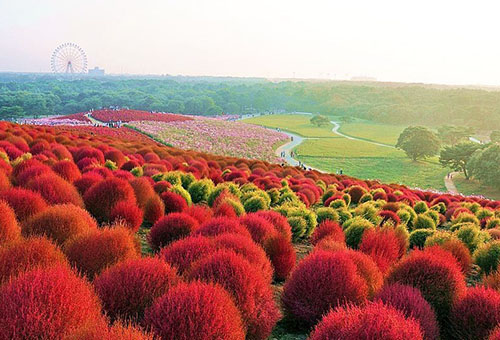
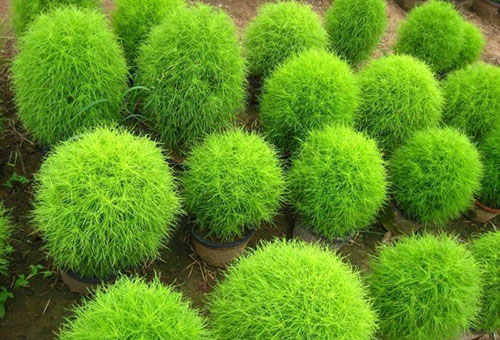


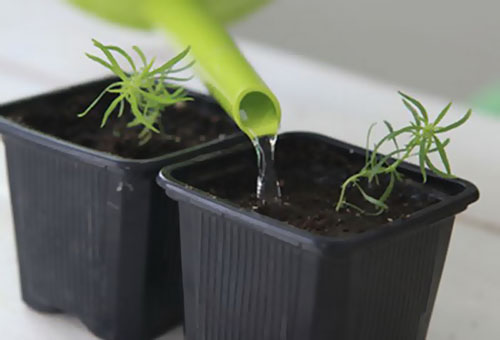
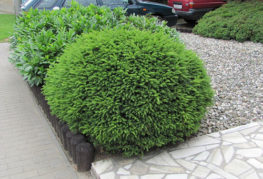

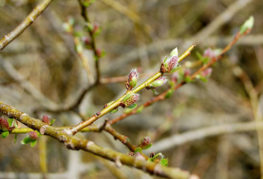
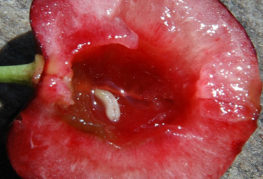
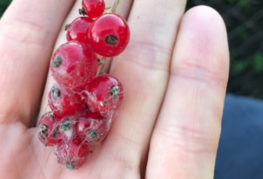

and will be published shortly.